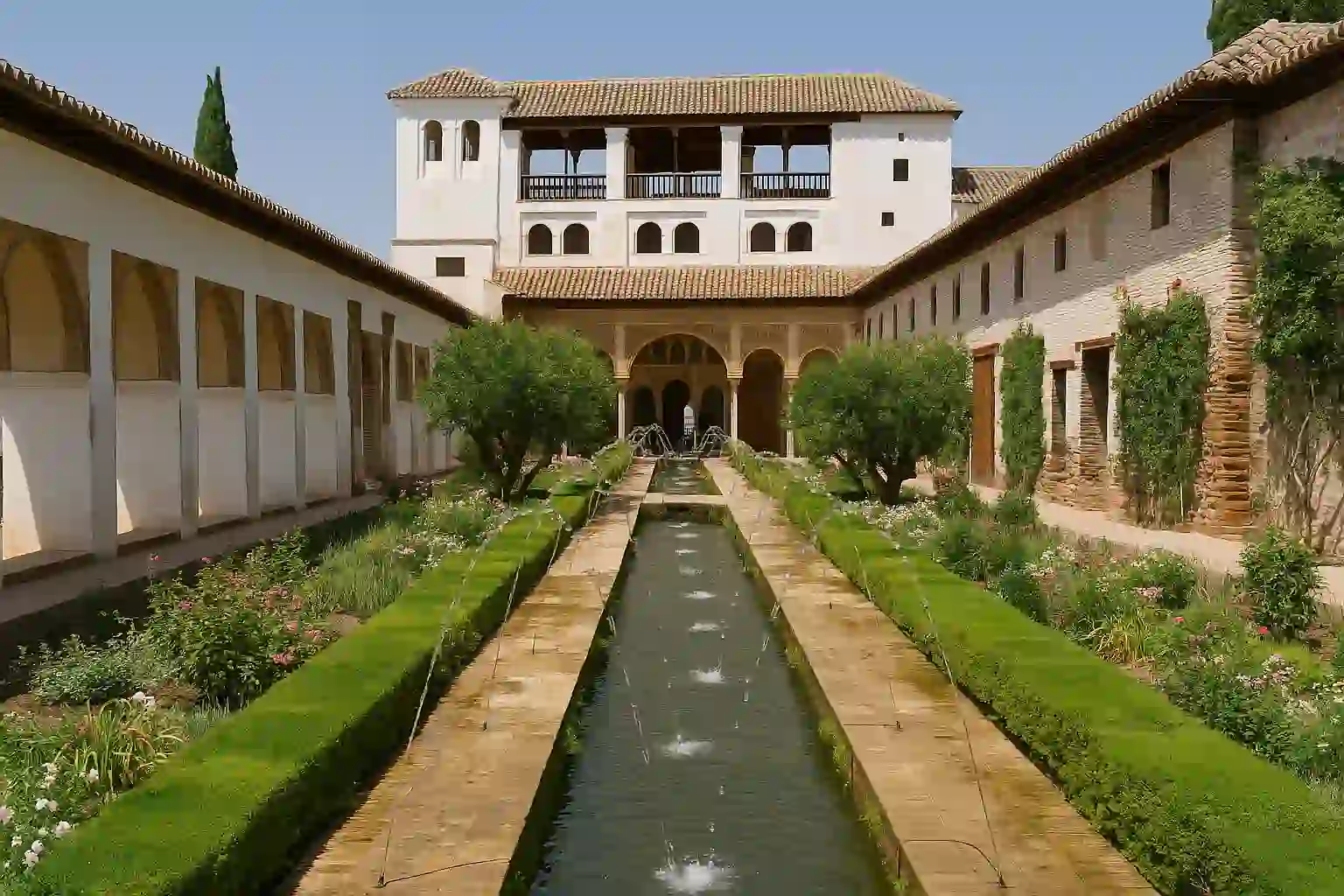Generalife Gardens – Water, Terraces & Nasrid Paradise

A Summer Retreat & Agricultural Estate
The Generalife, built in the 13th century on the slopes east of the Alhambra, served as a leisure palace and working farm for the Nasrid rulers. Its orchards and vegetable gardens were among the few medieval areas of agricultural productivity that survive today. The gardens occupy terraces carved into the hillside; their current form blends original Nasrid elements with 20th-century restorations.
Layout & the Patio de la Acequia
At the heart of the Generalife palace is the Patio de la Acequia (“Courtyard of the Water Canal”). This long rectangle (about 12.8 × 48.7 m) holds a quadripartite garden divided into elongated beds. Along its central axis runs a water channel lined with jets that arc across the pool — a 20th-century reconstruction inspired by historic descriptions. On the short axis a paved path crosses the canal, and a small belvedere (mirador) projects from the western wall, offering views over the Alhambra. The pavilions at the north and south ends once housed the sultan’s reception halls, with richly carved stucco, sebka motifs and wooden ceilings.
Other Courtyards & Features
- Patio de la Sultana – Also called the Courtyard of the Cypresses, this space above the Acequia courtyard contains pools, gardens and paved paths. Its current layout dates to post-Nasrid times but evokes the romantic lore of a cypress linked to a Nasrid princess.
- Water Stairway (Escalera del Agua) – A four-flight staircase whose balustrades carry water channels. Small landings with fountains interrupt the flights, creating a cooling cascade on the ascent to the high gardens.
- High Gardens & Walk of the Oleanders – Terrace gardens above the palace feature oleander-lined paths and the Romantic Pavilion; visitors exit the Generalife via the Paseo de las Adelfas (Walk of the Oleanders).
- Outer Terraces & Orchards – On lower terraces, market gardens known as Las Huertas have been cultivated since the 14th century. Pebble mosaic paths framed by clipped cypress hedges lead through these productive plots, reflecting the dual function of the estate.
Plants, Water & Symbolism
The gardens’ design marries sensory pleasure with symbolism. Myrtle, cypress, oleander and citrus provide fragrance and shade, while fountains and channels offer the sight and sound of flowing water. These elements evoke Qur’anic descriptions of paradise and emphasise the prosperity of the Nasrid court. Historically, flower beds in the Patio de la Acequia were sunken below the walkway level and planted with low shrubs like myrtle; deeper pits allowed orange trees and roses, though today’s plantings are modern interpretations.
Visiting Tips
- Allow at least 1–2 hours to wander the gardens; combine with a visit to the Nasrid Palaces for a full day.
- Visit early morning or late afternoon for softer light and fewer visitors; in summer, shade is scarce on the terraces.
- Follow the water: start in the Patio de la Acequia, ascend the Water Stairway, and finish in the high gardens for panoramic views.
- Look for historical details like pebble mosaics, carved stucco in the miradors, and the restored water channels on the stairs.
The Generalife is a living garden history — from medieval orchards to romantic 20th-century plantings. Let the flow of water and the rhythm of terraces guide your pace.
